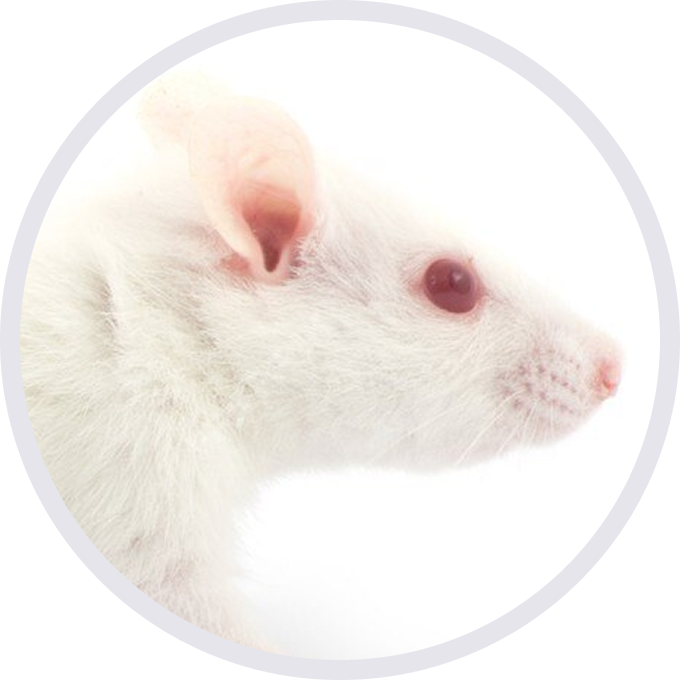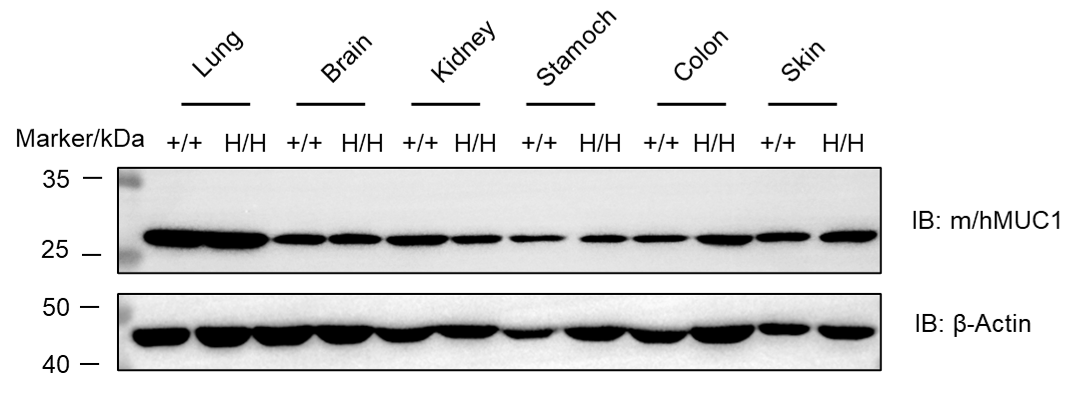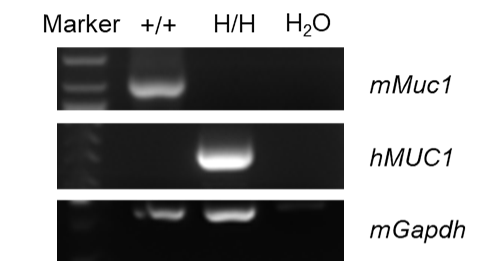
NOD.CB17-Muc1tm1(MUC1)Bcgen Prkdcscid Il2rgtm1Bcgen/Bcgen • 113229

| Product name | B-NDG hMUC1 mice |
|---|---|
| Catalog number | 113229 |
| Strain name | NOD.CB17-Muc1tm1(MUC1)Bcgen Prkdcscid Il2rgtm1Bcgen/Bcgen |
| Strain background | B-NDG |
| NCBI gene ID | 3561,4582,5591 (Human) |
| Aliases | ADMCKD; ADMCKD1; CA 15-3; CD227; EMA; H23AG; KL-6; MAM6; MCD; MCKD; MCKD1; MUC-1; MUC-1/SEC; MUC-1/X/ZD; PEM; PEMT; PUM; MUC1; CD132; CIDX; IL-2RG; IMD4; P64; SCIDX; SCIDX1; DNA-PKC; DNA-PKcs; DNAPK; DNAPKc; DNPK1; HYRC; HYRC1; IMD26; XRCC7; p350; ADTKD2; Ca15-3 |
Gene targeting strategy for B-NDG hMUC1 mice. The mouse Muc1 genome that encodes the full-length protein was replaced by human MUC1 genome in B-NDG hMUC1 mice.

Western blot analysis of MUC1 protein expression in homozygous B-NDG hMUC1 mice. Various tissue lysates were collected from wild-type B-NDG mice (+/+) and homozygous B-NDG hMUC1 mice (H/H), and then analyzed by western blot with anti-MUC1 antibody (Abcam, ab45167; Invitrogen, PA5-116457). 40 μg total proteins were loaded for western blotting analysis. MUC1 was detected in lung, brain, kidney, stomach, colon and skin in from wild-type B-NDG mice and homozygous B-NDG hMUC1 mice, the antibody was cross-reactive between human and mouse.

Strain specific analysis of MUC1 mRNA expression in wild-type B-NDG mice and B-NDG hMUC1 mice by RT-PCR. Stomach RNA were isolated from wildtype B-NDG mice (+/+) and homozygous B-NDG hMUC1 mice (H/H), then cDNA libraries were synthesized by reverse transcription, followed by PCR with mouse or human MUC1 primers. Mouse Muc1 mRNA was detectable in wild-type mice. Human MUC1 mRNA was detectable only homozygous B-NDG hMUC1 mice but not in wild-type mice.